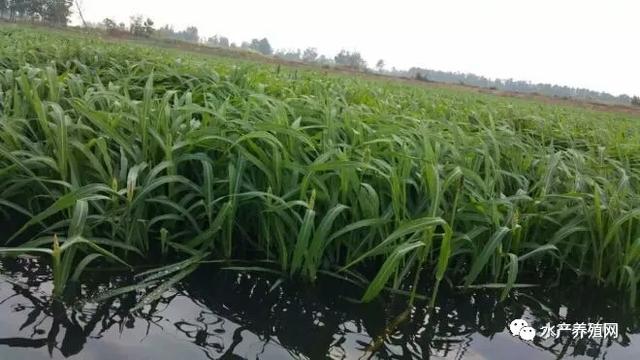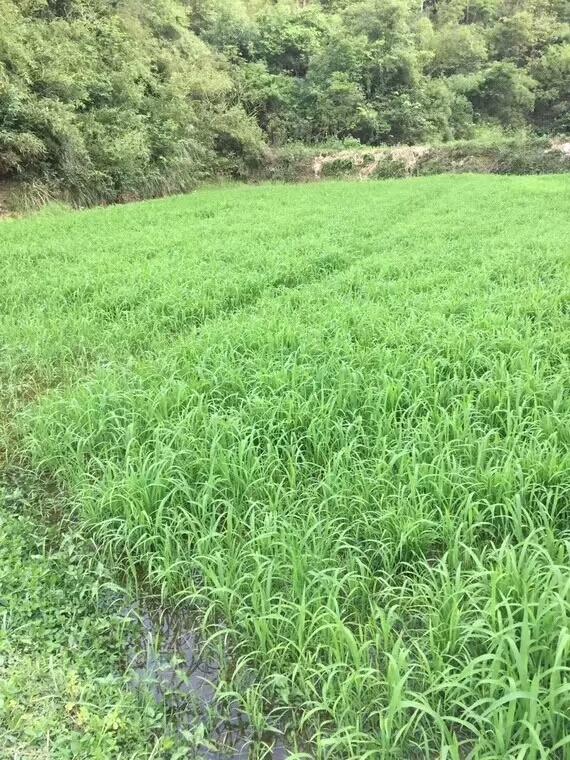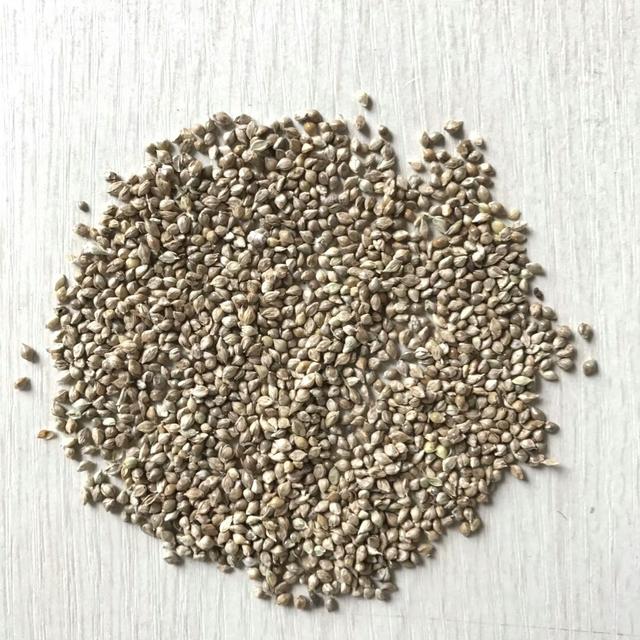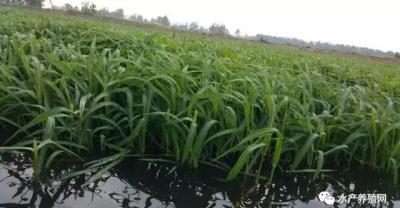What are the advantages of cultivating crayfish and planting millet grass?
From May to June every year, a lot of water plants in crayfish ponds always rot down!
Isn't that a tragedy? For the care of aquatic plants, many articles and many experts have given a lot of good methods. For example, when planting, set aside a certain row spacing, plant spacing, to ensure that water plants occupy a certain coverage of the pond, timely hit the grass head, cut the passage, and so on.
But some of them can't do it if they talk too much.
In fact, crayfish aquaculture as long as a little, can make the "old, rotten" phenomenon no longer.
A slight laxity in the management of conventional Elodea and black charophyte makes the aquatic plants grow into a "dense underwater forest" in the pond, resulting in poor communication of the pond water and uneven distribution of dissolved oxygen in the pond. If the growth of aquatic plants is not controlled in time to a certain height, there will be aging and withering, resulting in the death of large areas of aquatic plants, the deterioration of the bottom water quality of the pond, and the difficult control of crayfish diseases. There are also pests and other attacks on Elorella and charophyte themselves. And millet grass, there will be no problem in these aspects.

The advantages of millet grass
1. Millet grass is resistant to cold and high temperature
The most suitable temperature for the growth of millet grass is 25 ℃ ~ 35 ℃, and the growth rate of 5-8 is the fastest, and it still grows well under the high temperature of 35 ℃ ~ 40 ℃.
Second, the length of sowing time
Generally, seeds can be sowed at temperatures above 10 ℃, and can be sowed 3 or 4 times a year, and can be sown in late March and June and August.
3. Simple cultivation and management
The sowing methods include sowing, sowing, seedling raising and transplanting. When sowing, it is about 2 meters in a row, and the row spacing is about 4 meters. Generally, the amount of seed per mu is about 2 kilograms. Millet grass accounts for about 60% of the pond. When planting, the bottom of the pond should be wet. As long as there is enough water for a long time, millet grass can grow exuberantly. Millet grass is a relatively tall water plant with uniform thickness and not easy to lodge. The main rod can be up to 0.8 meters long and grow high with the depth of the water. Each plant is independent. If there is sporadic death in the pond, it is easy to find.
Fourth, the passage is unblocked and the recapture rate of the earth cage is high.
Successful case of breeding
Boss Song, a farmer in Shihe Town, Tianmen City, Hubei Province, has three ponds, each with 60 mu of millet grass, every 2 meters in a row. After clearing the pond in October and drying the pond for two months every year, millet grass seeds are sown in three ponds with a total of 200 jin, shrimp seedlings 120 jin / mu and specifications 80 / jin. The perennial millet grass has been very good, and the water level is gradually increased to about 1 meter every day. The deepest water level in summer is 1.2 meters. From the end of May to July, we often use "pure brewed lactic acid bacteria" + "amino acid moisturizer" to cultivate algae, and the whole pond will be rebottomed and supplemented with calcium once in about 7 days. The water quality of the whole culture process has been "clear, clean, tender and cool". When you go to the ground cage to catch shrimp, each cage catches about 20 jin, and about 70% of the whole pond is collected in about ten days.
The whole process of breeding is not afraid of high temperature affecting the growth of grass, and it is difficult to control the wild growth of aquatic plants. This may be the Bureau of Intelligence and the Bureau in charge. Only if we have a better grasp of the initiative can we not be trapped by the current predicament. Hope that more of our farmers can take advantage of the situation and win!
Many crayfish farming ponds cultivate crayfish by planting Elodea. Under the influence of many factors, farmers feel that Elodea is difficult to control in many aspects, which makes the water quality difficult to regulate and the crayfish culture process difficult to observe. Also known as the "three difficulties" phenomenon.
In the production practice, some farmers have created the cultivation way of raising crayfish with millet grass. Millet grass is a kind of single plant with fast adaptability, early germination and rapid growth. It can not only simply control its growth density, but also easily observe the living condition of crayfish in crayfish ponds at any time, and improve the recapture rate of crayfish.
So, what conditions do you need at the mouth of the pond where millet grass breeds crayfish?
I. the necessary conditions for crayfish culture in Xiaomi Caotangkou
1. The pond should have sufficient bottom fertilizer or thick silt layer to ensure adequate nutrition for the growth of millet grass. In addition, the bottom of the pond should be as flat as possible to ensure uniform water depth, which is conducive to the germination and growth of millet grass.
2. The drainage and irrigation system should be complete, so that it can drain and irrigate, prevent drought and waterlogging.
3. The depth of the pond should be about 1.5 meters, and the aquaculture pond with a slightly larger area is the best-the deep water pond has a large water capacity and the dissolved oxygen content is more sufficient.


II. Sowing and management
1. How to sow
①, sowing date: February to August
②, sowing rate: 3 kg / mu, adjust the sowing rate according to the germination rate of millet grass, through the germination experiment, we can not only distinguish the quality of millet grass species, but also grasp the sowing rate.
③, sowing method: drain the pond water before sowing, and then spread millet grass seeds or millet grass seeds after sprouting evenly in the place where the species is planted. In general, the area of millet grass planted in crayfish ponds accounts for only 60% of the whole pond, with a row spacing of 4 meters every 6 meters wide.
Scrape a layer of mud as much as possible after sowing to prevent bird damage, such as planting millet grass by transplanting, it can be transplanted when millet seedlings grow to 20 centimeters.
2. Management of millet grass
In management, it is mainly to prevent drought and waterlogging, to ensure that the bottom of the pond is often wet or there is a small amount of shallow water (not too much stagnant water), and to add water or drain in time according to the growth status of millet grass in the process of growth. in case the stagnant water is too high and drowns the millet grass or because the water level is too shallow, the millet grass loses to death due to drought.
Crayfish culture should be considered from the crayfish growth environment and demand, the living environment determines the production, but also determines the quality of crayfish, but also determines the management technology of managers. The so-called "high input and high output", the high yield of many agricultural products is not directly related to the high output value! High output value is achieved through continuous ideological and ideological improvement and technological innovation, therefore, we need our agricultural people to "change" in many ways, establish new methods, new technologies, and so on. May all agricultural people have both a bumper harvest and a good harvest!
Transfer to aquaculture network
- Prev

Analysis of Human Third Teeth--Dental Implants
Once the youth, has gradually away from us, appearance, physiology, body in all aspects after the age of forty will take place more and more changes, in this green...
- Next

How much do you know about dental implants?
In the view of many people, after making implant teeth, it can finally save trouble, because implant teeth can grow in the mouth like real teeth and imitate realistically.
Related
- Fuxing push coffee new agricultural production and marketing class: lack of small-scale processing plants
- Jujube rice field leisure farm deep ploughing Yilan for five years to create a space for organic food and play
- Nongyu Farm-A trial of organic papaya for brave women with advanced technology
- Four points for attention in the prevention and control of diseases and insect pests of edible fungi
- How to add nutrient solution to Edible Fungi
- Is there any good way to control edible fungus mites?
- Open Inoculation Technology of Edible Fungi
- Is there any clever way to use fertilizer for edible fungus in winter?
- What agents are used to kill the pathogens of edible fungi in the mushroom shed?
- Rapid drying of Edible Fungi

